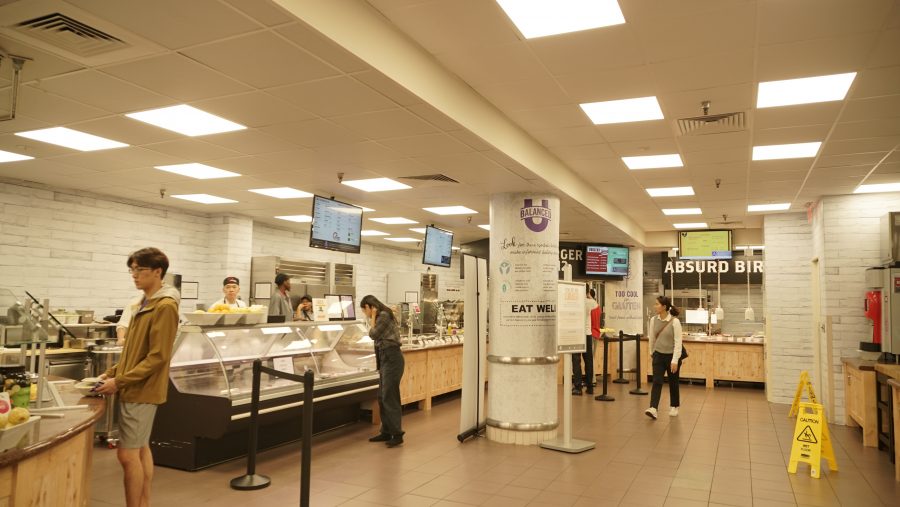Palladium Food Court filth flies beware: the facility has upped its game, hiring not one, but two outside extermination teams, one of many measures taken to improve upon the narrow B grade received by the dining hall in September after an initial failing C grade.
Palladium failed a health inspection — mainly due to the presence of filth flies in the facility — in early September and received a 46, 19 points above what qualifies for a C, the worst grade possible. The grade has since improved to a B as the Department of Health and Mental Hygiene’s policy requires a follow-up inspection for restaurants that fail as an opportunity to improve their grade. The B grade will stand until there is another inspection.
“At some point in the future, there will be another inspection, and we will have an A,” NYU Eats Vice President Dennis Lestrange told WSN. “I’m committed to it.”
Palladium’s low grade was partly due to food kept at improper temperatures. Lestrange said rice at the Mr. Bing station and tomatoes in the facility were two food items that resulted in Palladium’s high score. He said some of the issues occurred due to “poor timing,” but that procedural methods have since been changed to avoid future problems.
Palladium hired two outside extermination teams to sanitize and fumigate the kitchens to get rid of the filth flies, according to Lestrange. Additionally, it has increased the frequency of visits from a third-party company that critiques the dining hall according to a rubric similar to a health inspection, to help it prepare for future DOHMH visits. Employees will also be retrained on temperature-logging methods.
“We increased the visits [from the third-party company] and asked for spontaneity, so now they just pop up and do an inspection,” NYU Eats Quality Assurance Director Clifford Mondesir told WSN.
A former inspector for the DOHMH, Mondesir said he is on campus to ensure that future health inspections will show the progress Palladium has made within the past month.
A tour inside the facility showed long temperature logs located at all preparation and serving stations that document the food to be served to students. According to Chartwells District Chef Sarah Bodner, if a cooler is at the wrong temperature it will immediately be evaluated; each individual item within it will be checked for its specific temperature and then moved to a properly-functioning fridge. If the food is not at an acceptable temperature past the time limitation set by the DOHMH, it will be thrown away.
“All of our associates are serious about [food and safety],” Bodner said. “[Food and safety] is a part of putting on my chef coat. It’s really important.”
By the manager’s office in the kitchen, a log on the wall tracks the amount of waste generated by the facility. Although some of the policies implemented after the health inspection sacrifice waste limitations for food safety, Palladium managers still expect to meet the goal of less than 10% waste in the future.
“There’s a new policy that all the rice is being tossed at the end of the night,” Lestrange said. “We’re tracking the waste logs, but that’s something that is not being saved for safety reasons.”
The Palladium staff awaits the next health inspection, which will also come unannounced, to potentially replace the B that is currently hanging on the wall.
“I’m confident with all the changes we have here that we’re going to have an A next time,” Lestrange said.
A version of this article appeared in the Monday, November 4, 2019, print edition. Email Milliana Bocher at [email protected].

























































































































































